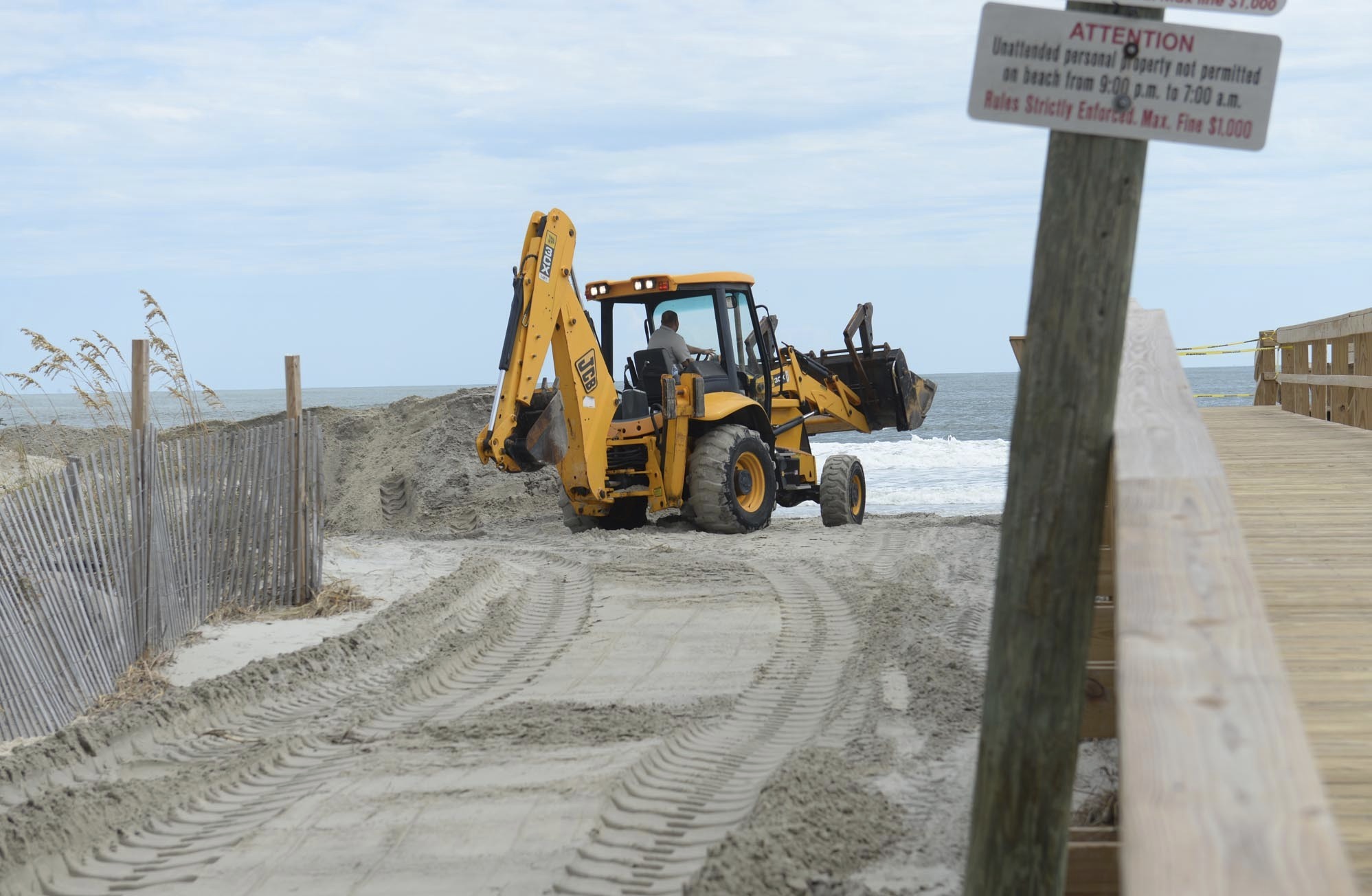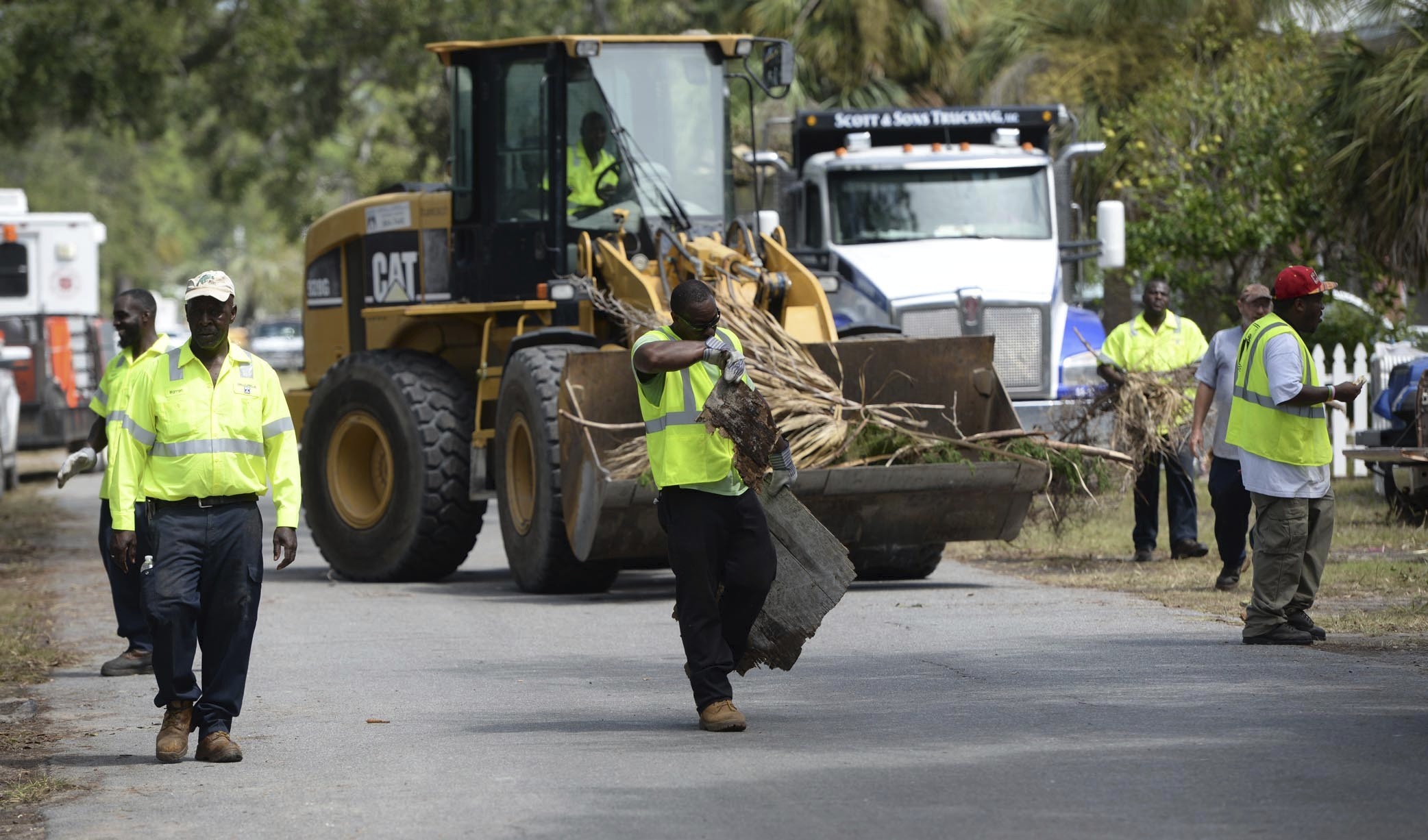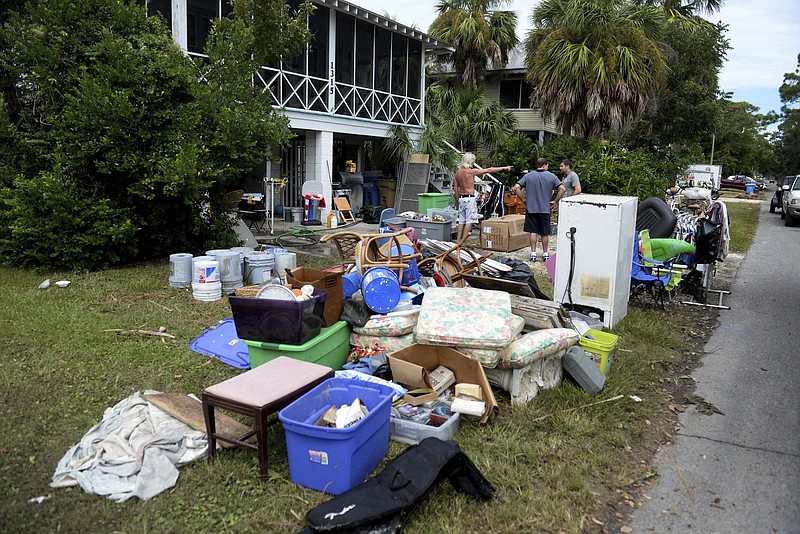BRUNSWICK, Ga. - Describing Hurricane Irma as a "catastrophic event" after viewing its destruction from the air, Gov. Nathan Deal promised Thursday the state will pay local governments' share for cleaning up debris along the Georgia coast.
Deal got a firsthand look at the damage inflicted in Glynn County, where hundreds of homes flooded on St. Simons Island as Irma crossed southwest Georgia on Monday as a weakened tropical storm more than 100 miles inland.
Uprooted trees and shattered limbs still littered roads and yards Thursday, both on the island and the port city of Brunswick on the mainland. Like other communities in coastal Georgia, Glynn County not long ago finished cleanup efforts after Hurricane Matthew raked the area last October.
"You had two hurricanes in such a short time, I'm sure these local officials will tell you they can use that money very well to do other things," Deal told reporters during a news conference at the Brunswick airport.
Typically the state and local governments would split roughly 25 percent of the cost for removing storm debris, Deal said, with the federal government paying the rest. He said after Irma, state funds would cover the entire non-federal share in Georgia.
 A Tybee Island city worker builds a dune near the beach access on 18th Street on Wednesday, Sept. 13, 2017. Storm surge flooded hundreds of homes near beaches and marshes, sunk numerous boats and trashed docks on the Georgia coast even though Irma was a weakened tropical storm when its center crossed the state more than 100 miles (160 kilometers) inland. (Dash Coleman/Savannah Morning News via AP)
A Tybee Island city worker builds a dune near the beach access on 18th Street on Wednesday, Sept. 13, 2017. Storm surge flooded hundreds of homes near beaches and marshes, sunk numerous boats and trashed docks on the Georgia coast even though Irma was a weakened tropical storm when its center crossed the state more than 100 miles (160 kilometers) inland. (Dash Coleman/Savannah Morning News via AP) Workers with Carroll & Carroll Inc. clean debris from residents' yards along Lewis Avenue on Tybee Island on Wednesday, Sept. 13, 2017. Storm surge flooded hundreds of homes near beaches and marshes, sunk numerous boats and trashed docks on the Georgia coast even though Irma was a weakened tropical storm when its center crossed the state more than 100 miles (160 kilometers) inland. (Dash Coleman/Savannah Morning News via AP)
Workers with Carroll & Carroll Inc. clean debris from residents' yards along Lewis Avenue on Tybee Island on Wednesday, Sept. 13, 2017. Storm surge flooded hundreds of homes near beaches and marshes, sunk numerous boats and trashed docks on the Georgia coast even though Irma was a weakened tropical storm when its center crossed the state more than 100 miles (160 kilometers) inland. (Dash Coleman/Savannah Morning News via AP)Alan Ours, county manager for Glynn County, said debris cleanup countywide cost about $10 million total after Matthew last year.
"It is huge," Ours said of the governor's decision to spare Glynn County and others a second round of debris-removal costs. "Every dollar for Glynn County is crucial."
Deal also toured Habersham County in northeast Georgia, where he described extensive tree damage from Irma. The storm toppled trees and limbs, leaving at least 1.5 million without power Monday.
By Thursday afternoon, about 204,000 customers of Georgia Power and Georgia Electric Membership Corp. still were without power.
There were no cost estimates Thursday for how much damage Irma inflicted across Georgia. But Jay Florence, deputy commissioner of the Georgia Department of Insurance, said roughly 50,000 claims had been filed statewide as a result of the storm. He said that number would likely increase.
In Glynn County, Ours estimated Irma caused flooding in 500 to 700 homes, many of them on St. Simons island. Thousands of residents who evacuated ahead of the storm began returning Thursday. For three days after Irma passed, police and National Guard soldiers kept people from re-entering.
With power out across the county, traffic lights weren't working and water and sewer service was limited, making it unsafe for residents to return sooner, said Jay Wiggins, Glynn County's emergency management director.
Marion McEachern got at least a foot of water inside his St. Simons Island home. On Thursday, he started a list of repairs that includes the removal of drywall and insulation soaked by floodwaters, and the replacement of his floor and much of his furniture. He said he was angry about the prolonged evacuation order, which local officials decided to maintain even after Deal lifted the state's evacuation order for the coast Tuesday.
McEachern said he doesn't plan on evacuating the next time a storm threatens coastal Georgia.
"I will stay," he said. "I could have been cleaning up my house. And I maybe could have prevented it from flooding."

